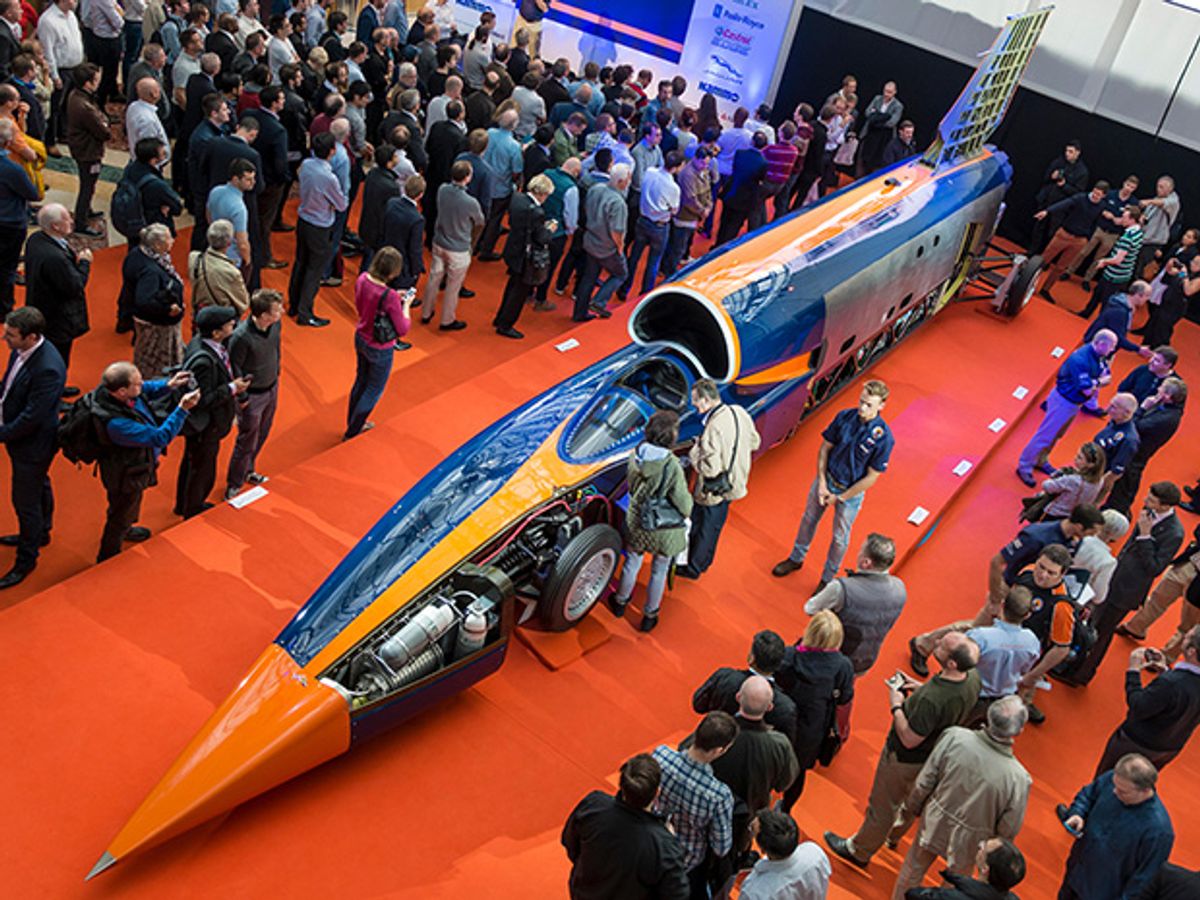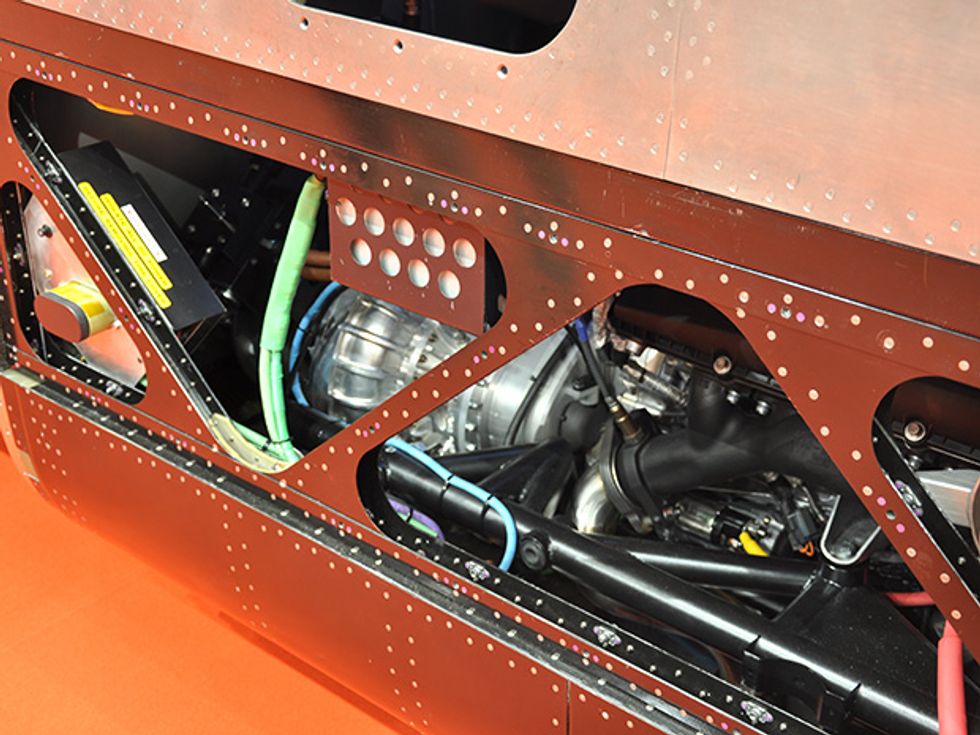It’s a long road to breaking the world land speed record, but the latest attempt, the UK Bloodhound SSC project, has passed an important milestone with the unveiling of the almost-finished vehicle to the public. Nearly 10,000 people filed into an exhibition space in London’s Docklands—now a hub for the financial and media industries—over the past weekend to see the car that the team hopes will break the current 1,227 kilometers per hour (763 mph) record next year in a desert in South Africa, before returning in 2017 to make the biggest leap in the record’s history, to 1,600 km/h.
The Bloodhound project has been running for seven years, with the build program occupying most of the last four. The car, which will be propelled by a jet engine from a Typhoon fighter aircraft and solid-fuel-burning rockets activated by a liquid oxidizing agent, is about 95 percent complete, according to systems engineer Joe Holdsworth. For the exhibition, panels were removed from one side of the car and from its 2-meter-high tail so that visitors could see the jet engine, plus the supercharged V8 Jaguar engine that will operate the pump that will supply oxidiser to the rockets, and some of the network of over 500 sensors that will allow the team to monitor the airflow over the car and the stresses affecting its structure during its high-speed runs. Also missing were the airbrake flaps that will be the first system to slow the car down; the aerodynamic winglets that will ensure that lift and downforce are within in safe limits; the housing that will sit over the rear wheels; and the strake, a composite ridge that runs from the root of the tail along its spine, housing some of the vehicle’s electronic systems, including modems.
Also still to be tested is the integration of the rocket oxidizer system. Its component parts—the Jaguar engine, the pump and its associated systems—have all been tested in isolation but not together. “We’ll take the systems out to our rocket supplier, Nammo, in Norway, and use their testing setup in the next few months,” Holdsworth said. On the initial record attempt, with 1290 km/h as the goal, the car will have one rocket. The team will add the other two for the 1,600-km/h attempt.
The electronics on the car will receive a shakedown when the car undergoes testing on an airfield runway in Cornwall, Southeastern England, which, according to chief engineer Mark Chapman, will take place by next Easter. Holdsworth added that the winglets and airbrake could also be tested at that time, although the projected speed at which the test will be conducted, about 320 km/h, would be too low for them to have much of an effect. “But it makes sense to test them,” says Chapman.
Other systems still to be proven include the cockpit electronics, which were installed by Corporal Hollie Jenkins, one of a group of military personnel from the Royal Electronic and Mechanical Engineers who have worked six-month shifts on the project. Then there’s the cockpit lighting system, which is adjustable to cope with the fierce sunlight the team is expecting at Hakskeen Pan, the record attempt site northwest of Cape Town. “We have a good idea of what the light conditions will be like,” Jenkins said, “but the final adjustments will be made with Andy Green [the project's driver and current landspeed record holder] once we’re in the desert.”
The team is also still short of funding; part of the reason for the weekend exhibition was to attract additional sponsors. “The fact that we’re doing two record runs will work in our favor,” said mechanical engineering lead Mark Elvin, who estimates that the team needs about £10 million to complete the build program and pay for next year’s desert visit. “When we come back at the end of 2016 holding a new record, it’ll prove our capabilities and more companies will want to come on board for the 1000 mph runs.”
The weekend saw Andy Green, an RAF Wing Commander, almost constantly surrounded by children seeking his autograph. Enthusing prospective young engineers is a major goal of the project, and the exhibition included an education area where compressed air-powered vehicles could be built and raced. “The thing that’s most excited me leading up to this event has been seeing the visitors’ reaction, especially the younger ones,” said Mark Chapman.
The effect was electric, and not just for the visitors. Project director Richard Noble, who himself broke the landspeed record in 1983 and is a famously loquacious man, was rendered completely speechless when he first caught sight of the car in place at the exhibition—the first time any of the team members can recall that happening.




